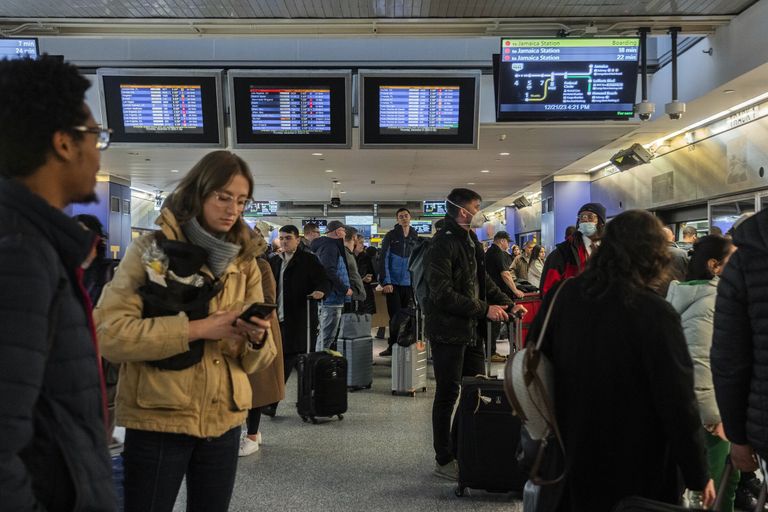As the holiday season winds down and COVID-19 cases start to pick up, a variant called JN.1 has now become the most common strain of the virus spreading across the United States.
JN.1, which emerged from the variant BA.2.86 and was first detected in the United States in September, accounted for 44% of COVID cases nationwide by mid-December, up from about 7% in late November, according to data from the Centers for Disease Control and Prevention.
To some extent, this jump is to be expected. “Variants take some time to get going,” said Dr. William Schaffner, an infectious disease specialist at Vanderbilt University Medical Center. “Then they speed up, they spread widely, and just when they’re doing that, after several months, a new variant crops up.”
JN.1’s momentum this month suggests that it may be more transmissible or better at evading our immune systems than other variants currently circulating, according to a CDC report published Dec. 22. The agency said that COVID remains “a serious public health threat,” especially for those who have always been at high risk of severe disease, such as older adults, infants, people with compromised immune systems or chronic medical conditions and those who are pregnant.
As far as experts can tell, JN.1 does not seem to be causing severe illness in most other people, although even a mild case can still make you feel “quite miserable for three or four days,” Schaffner said. The symptoms of a JN.1 infection are similar to those caused by previous COVID variants, including a cough, fever, body aches and fatigue.
To protect yourself against infection and severe disease, experts continue to recommend wearing masks, improving ventilation indoors when possible, staying home when sick and getting the latest COVID vaccine.
Preliminary research shows that the updated COVID vaccines released in September produce antibodies effective against JN.1, which is distantly related to the XBB.1.5 variant that the vaccines were designed to target. People may not build up as many antibodies to JN.1 as they would to XBB.1.5, but the levels should still decrease the risk.
“For those who were recently infected or boosted, the cross-protection against JN.1 should be decent, based on our laboratory studies,” said Dr. David Ho, a virologist at Columbia University who led the research on JN.1 and COVID vaccines, which was released as a preprint paper in early December. Rapid tests also continue to be a valuable tool, and the CDC has said tests already on the market work well at detecting JN.1.
There are signs that COVID cases are once again creeping up. There were just under 26,000 hospitalizations due to COVID the week of Dec. 10, a 10% increase from about 23,000 hospitalizations the week prior. But COVID hospitalizations are still far lower than they were during the peak of the first omicron wave in January 2022, and so far only about half as high as they were during the peak of the tripledemic last winter, when COVID-19, flu and RSV cases all surged at the same time.
It is too early to know whether JN.1 is responsible for the rise in hospitalizations or whether cases are picking up partly because of an increase in travel and large get-togethers for Thanksgiving and the winter holidays.
“When people are gathered inside close to each other, having parties and traveling and the like, those are the kind of circumstances where all respiratory viruses, including JN.1, have opportunities to spread,” Schaffner said.
COVID generally also has some seasonality, he added; countries in the Northern Hemisphere tend to see a lull in cases in the fall before infections and hospitalizations rise again in the winter.
JN.1 will most likely remain the dominant version of the coronavirus through spring, Schaffner said.
He and other experts noted that while vaccines offer protection against it and other variants, uptake remains low, with only 18% of adults having received the latest shots. Experts said everyone should consider getting vaccinated, especially those who are older than 65, are immunocompromised, have health conditions that put them at higher risk of severe illness or are traveling to visit loved ones who may be vulnerable.
“Give yourself a New Year’s present by getting this vaccine if you haven’t done it yet,” Schaffner said.
- Adenman
-

 1
1



Recommended Comments
There are no comments to display.
Join the conversation
You can post now and register later. If you have an account, sign in now to post with your account.
Note: Your post will require moderator approval before it will be visible.